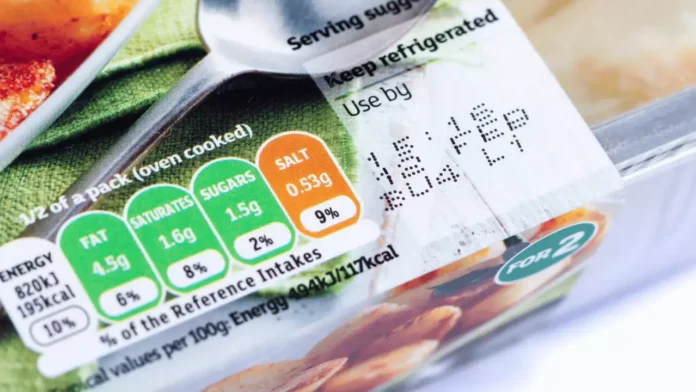The Indian Council of Medical Research (ICMR) has highlighted that food labels on packaged items can be misleading, emphasizing the importance for consumers to read the information carefully in order to make informed and healthy choices.
ICMR, in its latest dietary guidelines, has stated, “Certain manufacturers utilize labels to assert incorrect and incomplete claims regarding their food products.”
The report highlighted that health claims on packaged food aim to captivate consumer attention and persuade them of the product’s healthiness. Additionally, it noted that sugar-free foods could be high in fats, and packed fruit juices might contain as little as 10 percent fruit pulp.
The dietary guidelines for Indians released by the Hyderabad-based National Institute of Nutrition (NIN) under a leading health research body stated, “Even though the Food Safety and Standard Authority of India (FSSAI) has strict guidelines, the information presented in labels could be misleading.”
Continue Exploring: Majority of protein powders in India fall short on label accuracy and safety standards, reveals study
Providing examples, the NIN explained that a food product may be labeled as ‘natural’ if it lacks added colors, flavors, or artificial substances, and undergoes minimal processing.
“This term is frequently employed in a rather loose manner. Manufacturers often use it to highlight one or two natural ingredients in the mix, which can be deceptive,” it stated, advising individuals to meticulously read the label, particularly the ingredients and other details, to verify the claims.
Per FSSAI regulations, a product can claim to contain “real fruit or fruit juice” even if it contains a small amount, as low as 10%, of fruit juice added to the product, as illustrated by the NIN’s examples of misleading labels.
However, despite the claim of containing real fruit, the product may contain added sugar and other additives, with only 10 percent actual fruit pulp.
According to NIN, under FSSAI regulations, products can claim to contain “real fruit or fruit juice” even if they contain a small amount, such as fruit juices with only 10 percent or less fruit added to the product.
However, despite the assertion of containing real fruit, the product might contain added sugar and other additives, with only 10 percent actual fruit pulp.
Regarding the claim ‘Made with whole grain,’ it highlighted the potential for misinterpretation. This statement does not guarantee that the food items are not tertiary or ultra-processed.
If a food label states ‘organic,’ it might simply indicate the absence of artificial preservatives, flavors, and colors, and that the food ingredients are free from pesticides and chemical fertilizers.
If both of the aforementioned conditions are met, the label can state that the product is 100% organic & sport the FSSAI-approved “Jaivik Bharat” badge.
Moreover, it indicated that individuals frequently link sugar-free foods with reduced calories, perceiving them as advantageous for individuals with diabetes and those watching their weight.
“Foods labelled as sugar-free may be high in fat, refined grains (like white flour and starch), and even sugars that are hidden (like molasses, fructose, maltitol, and corn syrup).” These would suggest that the food item has a high glycemic index and a high calorie content,” the NIN stated.
Continue Exploring: FSSAI directs e-commerce companies to stop labeling dairy and cereal-based beverages as ‘health’ or ‘energy’ drinks
Although the FSSAI oversees nutrition and health claims, consumers are urged to confirm these assertions by scrutinizing the ingredients and nutritional information on the label, in accordance with the guidelines.
The guidelines also emphasize that manufacturers occasionally make inaccurate or insufficient claims on their food product labels.
There is a common misconception that ‘nutrition facts’ and ‘nutrition/nutrient claims’ are interchangeable.
Nutrition claims are statements that suggest or imply specific nutritional properties of a food.
Claims such as ‘low calorie,’ ‘high fiber,’ ‘low fat,’ or ‘low sodium’ are incomplete information. These claims need to be supported by providing the actual values or nutritional facts about the product.
The guidelines also suggested that the ‘date of manufacture’ and ‘use-by date’ serve as indicators of the product’s quality and safety, with consumption beyond that date potentially increasing the risk of food poisoning.
On the label, beneath the heading ‘nutrition facts,’ there is a statement about the ‘serving size.’ The guidelines emphasized that this is one of the most crucial pieces of information on the label because all the nutrition information displayed is based on this specified serving size.
The serving size can be described in various ways on the label, depending on the specific food item. Common measures include grams, cups, scoops, and pieces. Grams are typically listed most often, even if the serving size may also be expressed differently.
The guidelines also urged individuals to verify the net weight of the packet, which represents the total amount of product inside. While the nutrition facts label typically provides information based on one serving per 100g/100ml, many packages may contain multiple servings or exceed 100g or 100ml.
“Examine the number of servings per ml/g compared to the serving unit used to present the nutrition facts. Evaluate the calories and other nutrients in the portion based on the amount of food item used,” it advised.
The Dietary Guidelines for Indians (DGIs) were formulated by a multidisciplinary committee of experts headed by Dr. Hemalatha R, Director of ICMR-NIN, and have undergone rigorous scientific reviews.
Continue Exploring: Hindustan Unilever rebrands Horlicks as ‘functional nutritional drink,’ drops ‘health’ label amid regulatory changes





